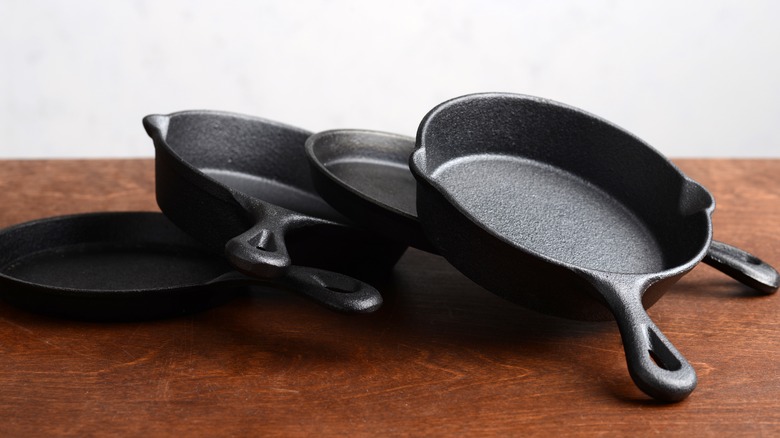The Absolute Best Pan For Toasty Pineapple Upside-Down Cakes
Upside-down cakes are the perfect no-fuss fruity desserts for summer get-togethers. One layer and frosting-free, they are a celebration of caramelized fruit and fluffy cake in one compact package. Of all the fantastic upside-down cakes, the pineapple version reigns supreme. But if you want to really impress with your next pineapple upside-down cake, you should make sure you're reaching for the best pan for the job: the trusty cast iron skillet.
There are many benefits to using your cast-iron skillet for baking desserts, especially if the dessert in question would be better with a caramelized crust. This caramelization is due to the material of the cast iron pan, which holds steady heat for long periods of time. In the same way that a cast iron skillet can create an unparalleled sear on your steak, it also sears the sugars in your caramel-soaked pineapple rings and cake crust without burning it.
The result is a cake that maximizes all of the richness by toasting the exterior to perfection. Still, if it's your first time using a cast iron skillet to make your dessert, there are a few basic rules to follow.
The searing power of a cast iron skillet
Before you start pouring your caramel syrup and fruit into the cast iron pan, you need to make sure everything is properly seasoned — and no, not in the salt and pepper kind of way. A seasoned cast-iron pan has been generously coated with oil and heated, then cooled down and wiped clean. This "seasoning" helps make the pan more nonstick. Regardless, you should also butter and flour your skillet before pouring in your sugared pineapple, as this caramelized base can be a particularly sticky thing to turn out onto the platter.
From there, you can generally follow your recipe as written, but you'll want to keep an eye on the bake time, as cast iron can bake your cake faster than a traditional aluminum cake pan. You may want to temp check your cast iron cake (usually done between 205 and 210 degrees Fahrenheit) to see when it's truly ready. One final tip is to not let your upside-down cake sit too long in the cast iron pan before flipping it out. After about 10 minutes, that caramel layer will begin to crystallize, making it much more prone to sticking.

